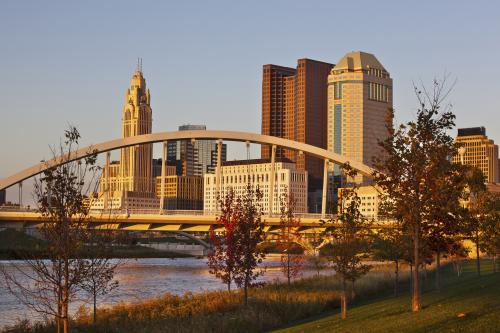Last week was a busy one for freight policy in Washington. Multiple hints indicated that a major water bill could reach a floor vote within weeks, the Senate held a freight roundtable, and the U.S. Department of Transportation released an entire legislative proposal to reform the surface transportation program, including major new freight components. While it would be easy to dismiss these maneuvers as the usual congressional kabuki, I have the opposite feeling.
Building a comprehensive national freight policy will take time, and last week confirmed the process is in full motion.
The earliest action will come from the major water bill—referenced as either WRDA or WRRDA depending on the congressional chamber— which includes major freight elements. Depending on the final bill, the most important policy is returning more, if not all, Harbor Maintenance Trust Fund revenues back to ports and their customers for harbor infrastructure. Other key freight components include: streamlining Army Corps of Engineers project planning, reforming the Inland Waterways Trust Fund, and boosting public-private partnership opportunities. It also looks like legislators are finalizing the approved port-related projects to fund, as Mark Szakonyi details in the Journal of Commerce ($).
This is a major step forward for waterborne commerce in the United States. Our seaports are our gateways to the world, and the only real option to move bulky export goods like chemicals, agricultural products, and oil products. But the country needs legislation that doesn’t ignore the intense concentration of activity in a select few ports.
According to forthcoming research in our Metro Freight series, 17 metropolitan port complexes are responsible for moving over 91 percent of all goods by value and over 81 percent of all goods by weight. This level of concentrated activity means almost every metropolitan economy relies on efficient operations in just a handful of key markets such as Los Angeles and Miami. These metropolitan areas embody national significance, and the final bill must strike the right balance between protecting these national economic engines and building-up capacity at smaller ports.
Off Capitol Hill, the other exciting news came from U.S. DOT and their formal GROW AMERICA proposal. Considering that the United States does not have a true national freight policy, it’s promising to see U.S. DOT start to build such a framework. It includes legitimate incentives for states to and regions to make long-term freight plans, and to coordinate with their in-state partners and neighbors. It then puts money behind those objectives by creating two new multimodal, competitive grant programs to award $10 billion over four years. It also reverses the previous bill’s limitations when it came to defining a national freight network. The driving forces behind these components—dedicated funding, a multimodal approach, and broad competition—should be hallmarks of any final law.
As Congress begins to consider its own national freight policy, there are two other components I hope they will consider.
First, a true national freight policy must recognize that the economy and freight are inseparable. There is a great nexus between global value chains, physical supply chains, and freight transportation—including two national committees—but federal policies approach both in silos. Building a national freight policy depends on economic patterns: what industries are growing, how consumer habits are changing, and how both affect demands for freight movement. The goal is to better plan for economic disruptions, like what we’re dealing with today around oil moving by rail or expansive NAFTA supply chains.
Second, any national freight policy must prioritize places of national significance, not projects. While every market trades goods, there is a select group of metro areas that function as key nodes in nearly all trade networks. The country needs policies that recognize the strategic importance of coastal markets like New York, inland hubs like Chicago and Memphis, and industrial centers like Houston. We need to have a real debate over whether the federal government should fund specific projects, or determine awards by place alone.
The next few months will be telling. We’ve got a water bill to pass, a Highway Trust Fund crisis to solve, and a fresh opportunity to debate the future of federal freight policy. I’m confident in the first, and I can’t imagine failure on the second. But the third is up in the air; Congress, it’s your move.



Commentary
Building a National Freight Policy, One Proposal at a Time
May 6, 2014